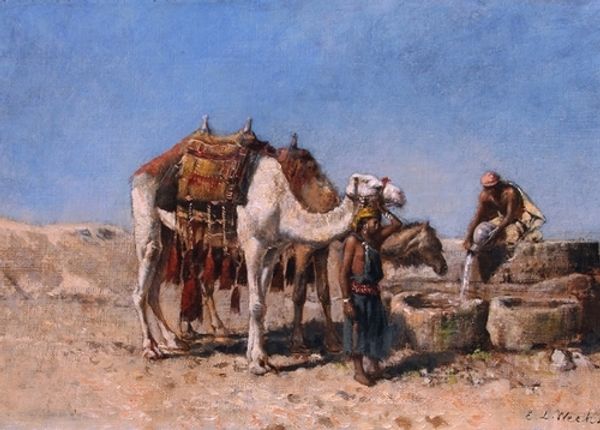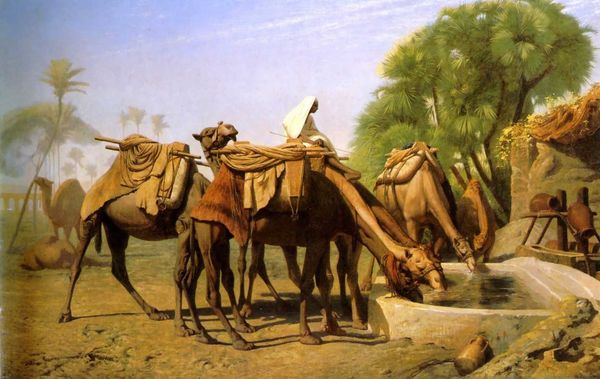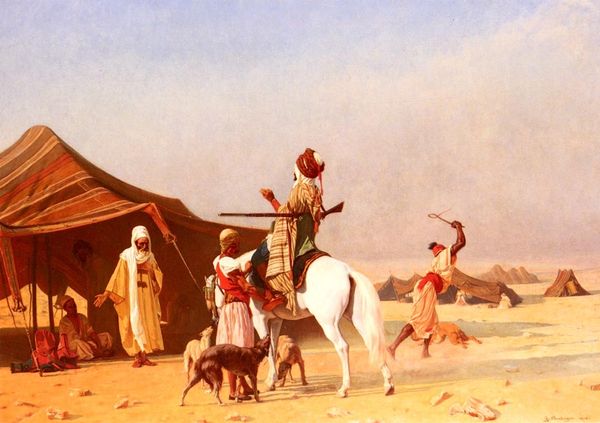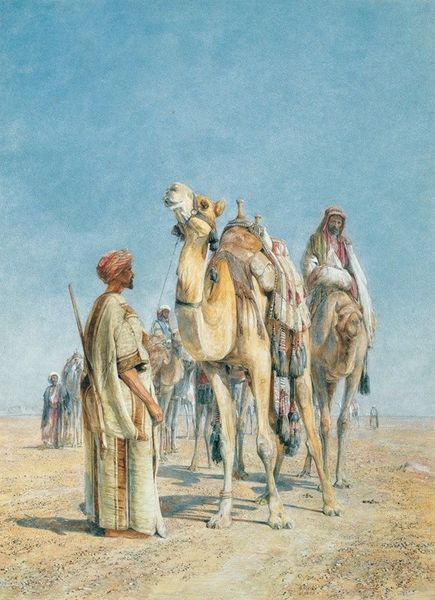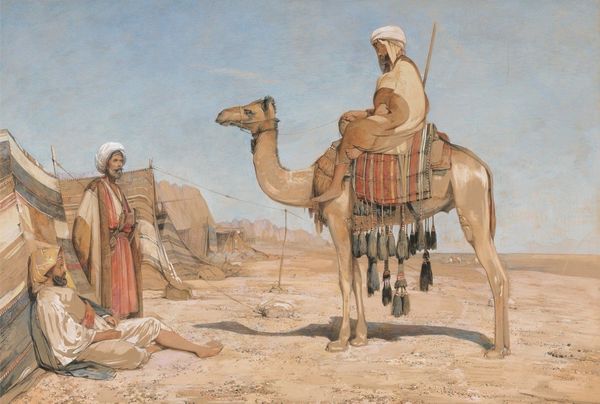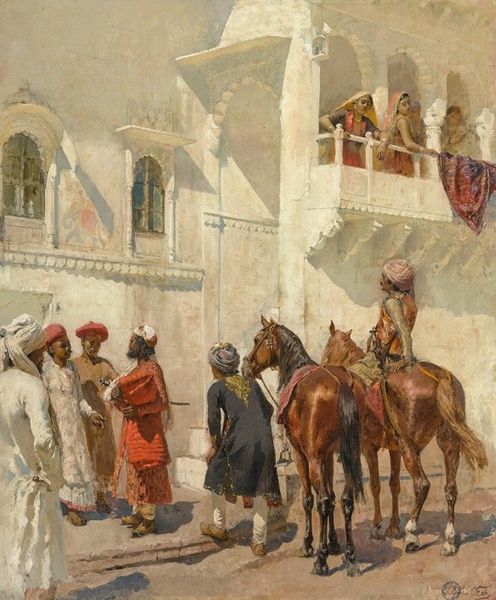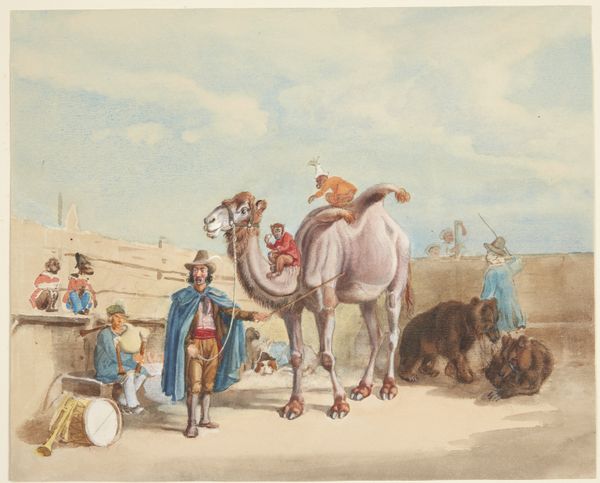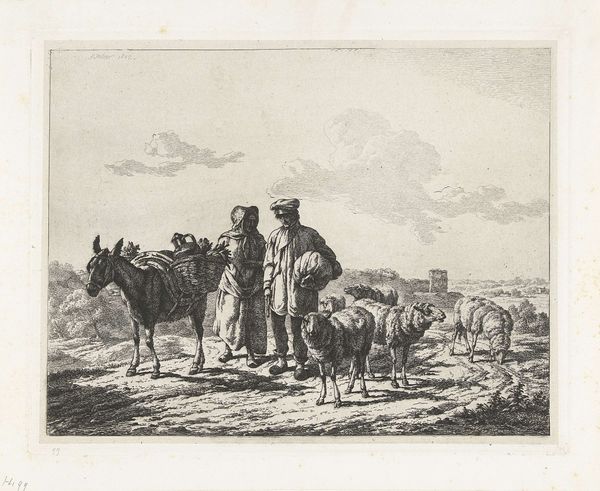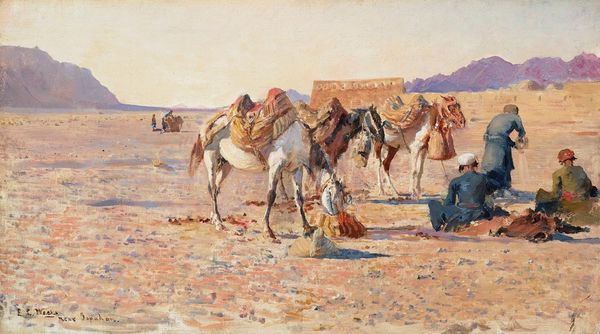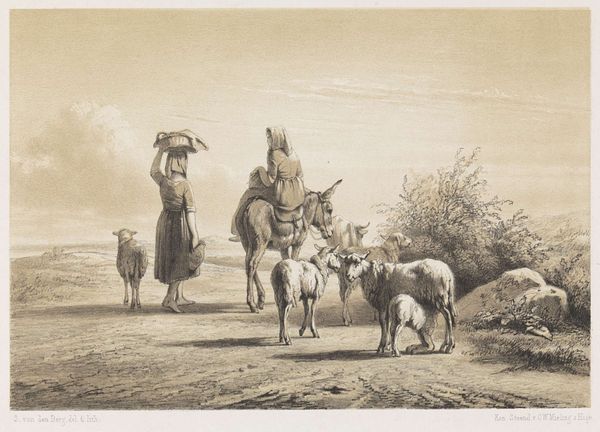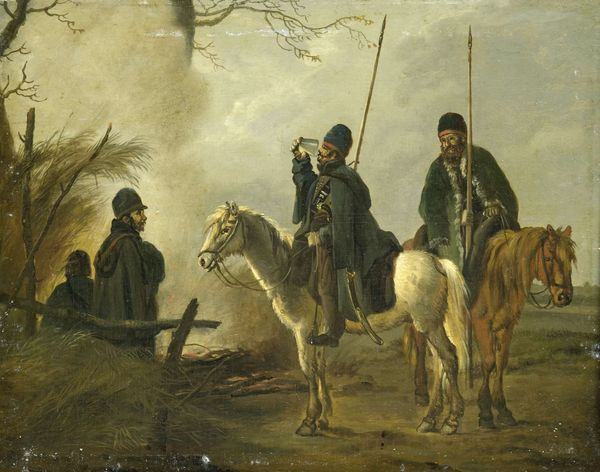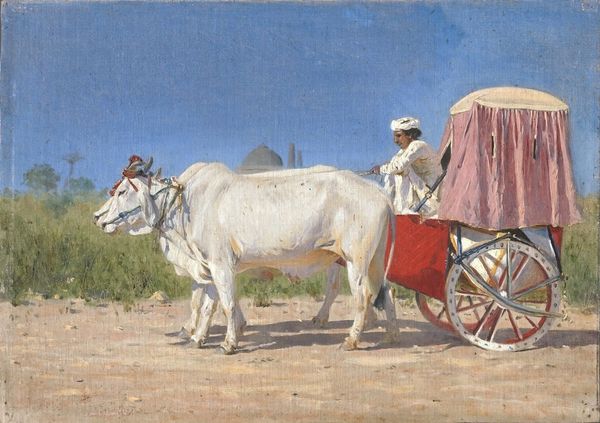
watercolor
#
gouache
#
narrative-art
#
landscape
#
figuration
#
watercolor
#
orientalism
#
genre-painting
#
watercolor
Copyright: Public Domain: Artvee
Curator: Looking at this artwork, I’m immediately struck by its sense of quiet stillness. It’s almost hazy, like a memory fading at the edges. There’s a vulnerability in the way the scene is presented. Editor: Indeed. What we see before us is “An Arab Encampment,” a watercolor and gouache work on paper, dating back to 1861 by the French artist Isidore Pils. It squarely situates itself within the Orientalist movement of the 19th century, where European artists depicted their romanticized visions of the "East." Curator: Romanticized, yes, but it avoids the more grandiose or sensational elements often found in Orientalist paintings, wouldn't you agree? The colors are muted, almost melancholic. The focus seems to be on the everyday life—the mundane moments of the people in the encampment. Editor: Precisely. Orientalism, we must remember, was tied to French colonial ambitions in North Africa. This piece provides us with a view into understanding the power dynamics at play and considering the representations of Arab culture during that era. The people here, however, are not really participants but they do hold all the action. Curator: That's a very thoughtful observation. It definitely brings forward a question about whose perspective we're witnessing. In a way, it mirrors the Orientalist lens itself, observing but never truly integrating or offering reciprocal agency to the observed. It makes me ponder the role of the artist in depicting cultural realities—the fine line between observation and appropriation. Editor: I am especially drawn to how Pils utilized watercolors to convey the ephemeral feeling of the scene, but it is through this medium that, historically, many stories have gone untold or inaccurately framed. And this, naturally, shapes social consciousness in very distinct ways. It invites us to delve into this history. Curator: It does give one pause, definitely offering a rich text for analyzing colonialism and artistic interpretation. It underscores art's potent ability to serve as both historical record and complex ethical arena. Editor: Yes, and this watercolor can indeed take you to many landscapes. It's really wonderful we can learn to understand different realities and to better know the stories of the past.
Comments
No comments
Be the first to comment and join the conversation on the ultimate creative platform.
